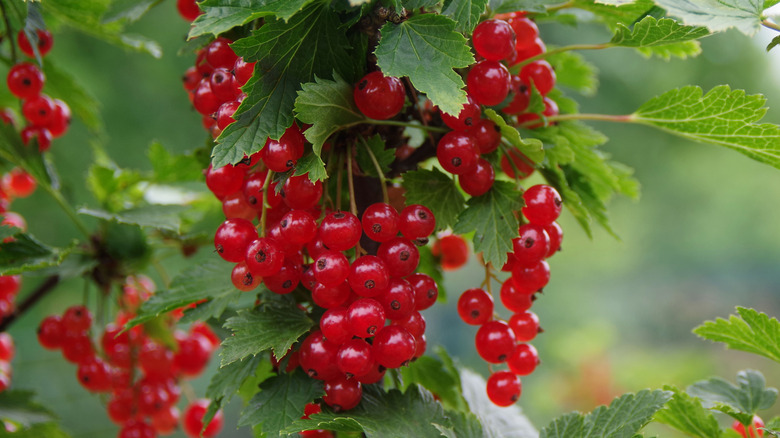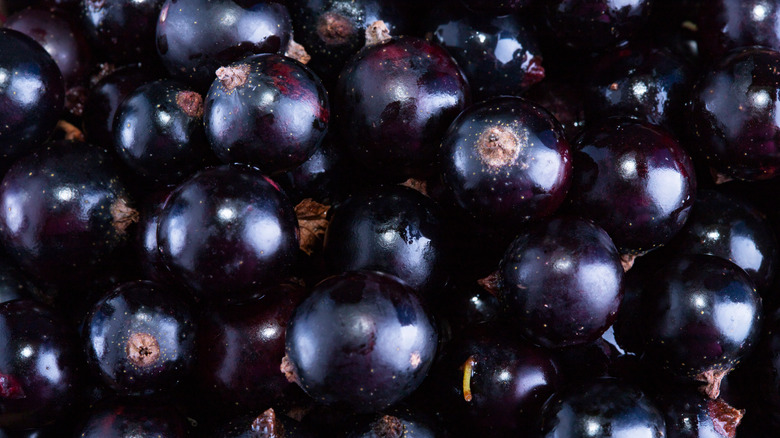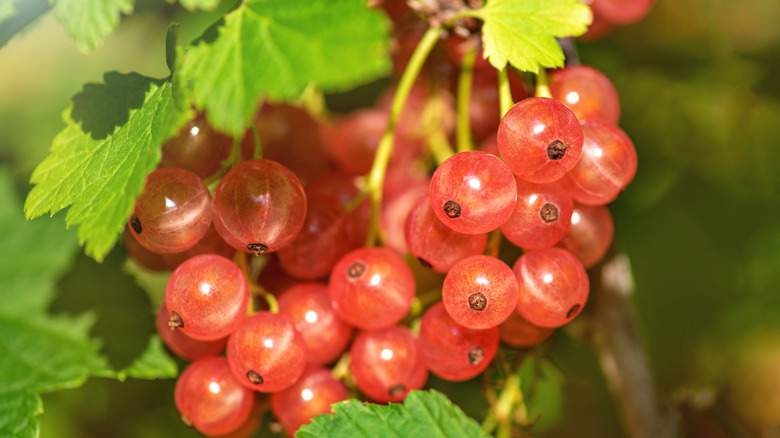What Are Currants And What Do They Taste Like?
Sometimes grouped into a category with raisins or dried fruits, "true currants" are really their own entity. While the Zante currant is basically a close sibling of the raisin an actual currant is actually a small berry within the gooseberry family.
Fresh currants come in multiple colors and varieties: black, red, pink, or white, as well as dried (or Zante) currants. They can be tart, sweet, acidic, with a pungent flavor that belies the currant's small stature. University of Minnesota notes that they are cultivated throughout Europe. Some have a very pure berry flavor, while others are more astringent. The New York Times notes that the flavor can even be mouth-puckering. They have a very short cultivation season and can be very delicate; they bruise easily. The flavor is rarely ever saccharine. Fine Cooking notes that the flavors of some currants are reminiscent of cranberries. Britannica notes that can also be piquant and juicy.
Are currants healthful?
The Kitchn notes that due to legislation passed against black currants in the early 1900s, Greece began exporting Zante currants, which are dried, super-small grapes. "True" currants are more difficult to find in common grocery stores than these Zante currants. Currant skins are glossy. They are stunning and their colors can be so varied and bright. Many also freeze currants prior to cooking with them. Some lighter colored currants are even quasi-transparent. They can be very picturesque, especially in the sun.
Currants are an exceptional choice from a health perspective. The Martha Blog notes that the black currant is the most nutritionally beneficial currant. Cornell University notes that black currants actually contain "four times more vitamin C than oranges and twice the antioxidants of blueberries." My Recipes explains that currants also pack tons of fiber, as well as manganese and copper. Britannica relates that some currants are actually used in lozenges because of their high vitamin C content. The Indigenous peoples were said to use currants to cure myriad ailments.
How do you cook with currants?
Currants are wildly diverse when it comes to culinary uses — it's nearly impossible to run out of ways to utilize them. They are wonderful in salads, pies, jams, tarts, jellies, baked goods, and with breakfast items. Currants are also wonderful in sauces paired with heavy, rich meats and poultry as well as fish. They also pair well with nuts, and are delicious in sorbets, puddings, and custards.
Currants can also be purchased preserved, canned, and jarred as well as fresh. They make wonderful jams and jellies because they're naturally full of pectin. Just be sure to keep in mind the flavor profile and tartness level of the particular currant you're using when you're deciding which preparations to use. They're delicious in vinaigrettes, over ice cream or yogurt, or stirred into oatmeal. They're also great in beverages of all sorts (with or without alcohol). You can just snack on them, as you would raisins. They also add a real pop of flavor to caponata or other savory relishes and sauces.


